Bird Nest Observation 2020
Fig. 1. Security lights under an overhang make for safe, protected nesting spots, I’ve discovered so far. Mother robins seem to agree, for they’ve returned three years in a row. In Fig. 1, I admire the snug fit of bird on nest.
Fig. 2. A lone egg. This security light is on the south side. I could take photos of the drama as I had a front-row seat in my upstairs laundry room. First, I had to remove the screen, though. I watch mother-to-be robin fastidiously build the nest, then come and go, changing positions periodically until she has faced all four points of the globe. Were I to walk in front of the window, to hang up shirt, socks, or napkins, she would dart away, I guess frightened by the shadow or changing light.
Fig. 3. Three siblings and a ray of sun appear. If I approach the window, the startled robin will fly away to perch on a nearby fence.
Fig. 4. Silent chorus of soprano, alto, tenor, bass. Watching a parent feed its chick brings an involuntary smile to one’s lips. If I draw near the window the robin will interrupt the feeding session and dart away.
Me & Birds. In 1952 I was growing up in a Boston suburb with a bird feeder installed right outside my second-story bedroom window, where chickadees and phoebes were the most frequent visitors. Seventy years later, in 2022, I am living in the Washington, DC suburb of Arlington on the first floor, where robins and mourning doves are my most persistent guests. From my observation platform, feeding has given way to nesting. I’m not a birder, but I have had a copy of Roger Tory Peterson’s Eastern Birds handy for decades. I’ve gone camping in the Montecristo National Park where Guatemala, El Salvador, and Honduras meet. One morning walking behind a guide I learn the vital phrase, grito de alarma. Years later I cruise several of the Galapagos Islands. My wildest dreams never had me photographing a chick fledge.
Bird Nest Observation 2022
Fig. 5. On May Day I take my first photo of parent-to-be mourning dove who has settled into a nest both parents made among the white and purple winter pansies (arborvitae in the background) on my back deck. I take the pic with an iPhoneX power 10x through a bay window in the family room. I am standing propped against the window frame, or once I get smarter sitting in a cushioned bamboo chair, facing northwest fixing my gaze on the nest and hoping for action. The planters are on the west and north sides of the house. Am concerned at how unprotected this location appears to be from prey above such as hawks, that have swooped down on my yard before.
Fig. 6. I discover a bed of fine fluffy down: baby dove chicks, hatchlings, or “squabs.” I never see a parent leave the nest until this day. I never see the white eggs. I give them wide berth, rarely going out on the deck. I hear of cases where human proximity causes parents to abandon the nesting brood. I learn that the male dove handles the day shift, the female the night shift. Not only is there parity in parental care, but mourning doves mate for life. That is why doves are sometimes released during wedding ceremonies to bestow good fortune on the union.
Fig. 7. A chick snuggles tightly against father’s breast in perfect symmetry of father-child positioning. The heads don’t seem too different in size, but the bodies do.
Fig. 8. Dad is preparing to leave the two chicks alone in the nest.
Fig. 9. The first lesson, kiddos, is to learn to look to the left. Got that?
Fig. 10. Now the second lesson is to learn to look to the right.
Fig. 11. Dad bestows a kiss on one chick, the other patiently waiting its turn. It turns out this will be fledging day.
Fig. 12. Chick #1 is off!
Fig. 13. Chick #2 has never known what it was like to be the only chick. No pressure!
Fig. 14. Chick #2 is clinging oh so desperately onto Dad.
Fig. 15. OK, high time to flutter a bit.
Fig. 16. Time for a good-luck peck. It’s a good opportunity to observe and compare size and coloring of parent & chick.
Fig. 17. Yay, no. 2 is off! With both chicks fledged, I am the one left alone. I wonder if I will see the chicks again! Where will they spend the night? Somewhere nearby near Mom and Dad? I go about my daily activities.
Fig. 18. The nest looks the worse for wear, trampled out of shape. You may have noticed my brown slippers at the bottom of this photo. Yes, I have ventured out on the deck. With the doves all gone now I can repossess the space! Just in time, as I’ve planned a dinner for seven on the deck for the next day. Dinner takes place, with a thank-you note containing the message, “our thanks to the birds for fledging just in time.”
Fig. 19. This is the morning after fledging. How many doves do we have here, three or four? Parents are light-colored, and the chick dark-colored, right?
Fig. 20. I am walking down the ramp from the back deck when I spy a squab nonchalantly ambling between the flaxseed hedge and the rubbish bins. Out for a spin, are ya, little fella? Or a reconnaissance mission around the perimeter? Let me follow at a discreet distance. Damn! I get too close and it flies away.
Fig. 21. Would the chick fly all the way to the top of the house? Don’t have to. It discovers a narrow ledge on the first-floor exterior window sill on the east side. That position will do very nicely, eight feet off the ground. I have an idea, and quietly go in the house and walk over to the same window.
Fig. 22. The chick is paying no attention to the dog walkers, but gazing intently at the window. Does it want to get in? How many chicks in their first hours of freedom are looking inside houses? A peeping chick.
Fig. 23. The following day I am at my desk on the other (west) side of the house when I hear a commotion at my window. It’s a chick! They are coming at me from both sides of the house.
Fig. 24. But wait! What do I see the next day? A dove on the deck railing with strand of straw in its beak. What’s going on? Has the word passed around it’s a cool nesting spot, as my daughter thinks? I try to stare it down. Hey, aren’t you done for the season? Is father dove planning a family with another lady? Or mother dove with another guy? At any rate, the flattened nest is rebuilt in a few hours, ready for new residents. Oh, no! Here we go again.
Fig. 25. I decide to sit down and have a talk with mother dove, ask her what’s going on. First I explain that I have enjoyed hosting birds on my property during their incubation periods, but that I feel it’s time to get back to unfettered enjoyment of the deck. The dove appears to espouse a different view. Since I have the house, why can’t they have the deck? Maybe some sort of creative time-share arrangement?
Fig. 26. Dad appears to be happily ensconced in the rebuilt nest.
Fig. 27. The photo is out of focus, as I was in a hurry to take the picture. But I know what it is. Six days after fledging one of the two chicks flies in to the nesting area for a cameo appearance. I’m doing fine, Dad. Just checking in for a brief second. See you later!
Fig. 28. The following day is Saturday, when I have Guatemalan workmen coming to repaint the wrought-iron railings. We decide not to disturb the four planters on the western front, but otherwise to complete the list of tasks. Mr. Dove puts up with the nearby labor, seemingly unperturbed by the odor of paint, human proximity, or music blaring from the iPhone. Robins feel threatened by human presence, doves appear to accept it.
Fig. 29. Later that day we behold two white eggs! The tending parent was scared by a loud noise near him and vacates the nest, time enough for me to step up and take a photo. A rare peak at what is a carefully guarded secret. A few minutes later Dad returns to take up his firm sitting position. I notice parent robin often vacating the eggs and parent dove never.
Fig. 30. Pop is flying in to relieve Mom at 8:37 AM. I’ve been wondering when the night shift changes to the day shift for doves. It’s fitting that I make the discovery of the Changing of the Guard on Memorial Day, being celebrated at nearby Arlington National Cemetery. As it happens, at the end of the day, I hear a loud flutter of wings near my window and ascertain that the night shift has begun. It’s 5:01 PM.
Taking stock. It’s been one month since I snapped the picture in Fig. 5. It is Covid time and I spend most of my days at home. Never before have birds, robins and doves in particular, absorbed my attention from dawn to dusk. What a contrast between dove and robin, I’ve noticed. The dove will sprawl its one-foot-long carcass on top of eggs and then chicks, in a planter open to the elements, as though it is completely relaxed, or getting a sun tan. On the other hand, the robin never relaxes, never sprawls, lives in perpetual fright, ever ready to dart away, even though protected by roof overhang. In the few minutes before my yoga class via zoom commences, I find myself sharing the most recent news of my feathered friends. The yoga instructor smiles and approves of the attention given to Nature during the stressful period of the pandemic. It is comforting to get out of oneself and become more familiar with birds which, after all, totally have invaded my property and used my many trees and thick hedges for refuge. I ruminate that it’s a good thing soil in my yard is abundant and grub-rich. How different the landscape would be in the inner city.
I am distracted by a personal health issue: recently, I was exposed to Covid-19. I need to put my camera down to administer at-home tests and listen for the timer to go off after 15 minutes. As for now, I seem to have escaped the scourge Alhumdulilah!
The next generation of deck dovelets has broken out of their eggs with parental pecking. For many days held down by mother’s substantial real estate, the babies little by little work their way out and up on their feet. Here we observe a moment of huddling where mother may be whispering signals as to what’s in store next. From the photo of May 13 (Fig. 6.) to that of June 9 (Fig. 31) we’ve come full circle: two generations in the nest in just under four weeks.
Fig. 32. These past few days as I’ve cancelled invitations to the home for meals or drinks, I’ve nevertheless not been alone. I’ve prepared my meals and eaten them on the deck where I can observe the current nest resident, while it observes me from eight feet away. It’s been a privilege to have an uninvited but welcomed guest, with a front-row seat for intimate behavioral observation. Lucky me!
COMMENTS:
1 Comment
Submit a Comment
CONNECT

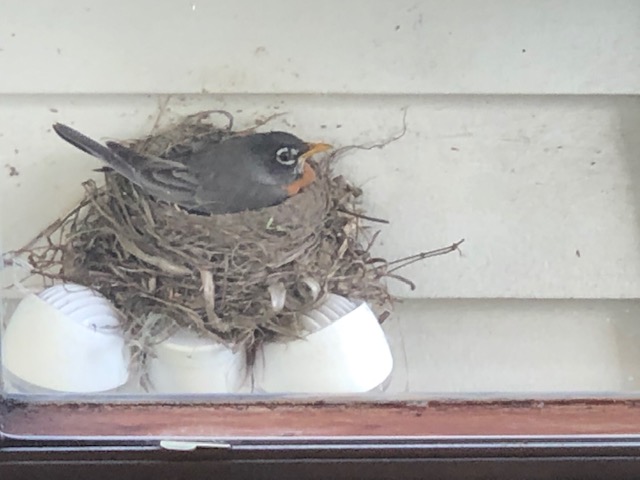
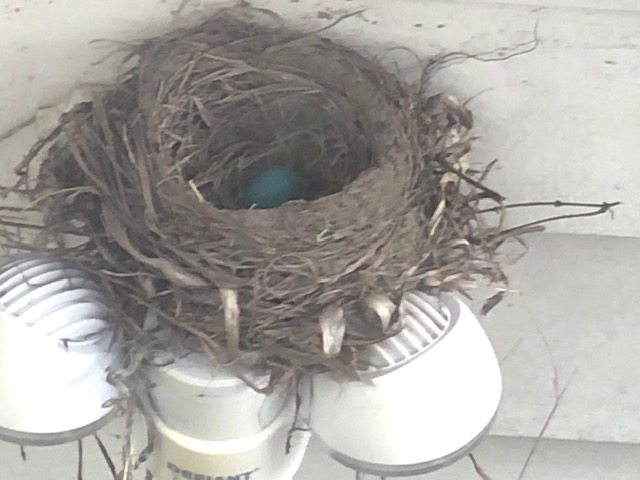
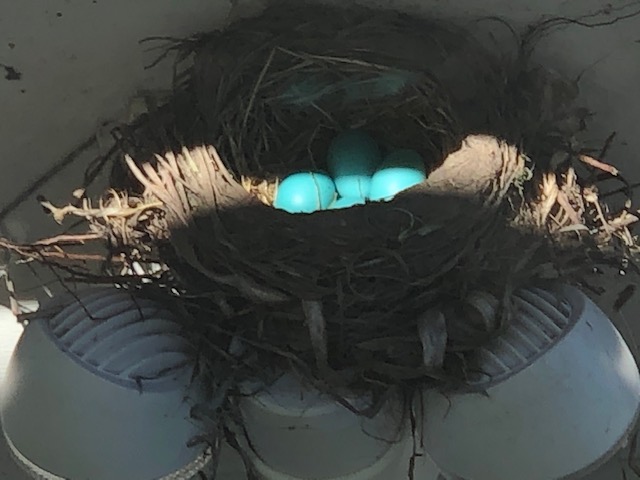
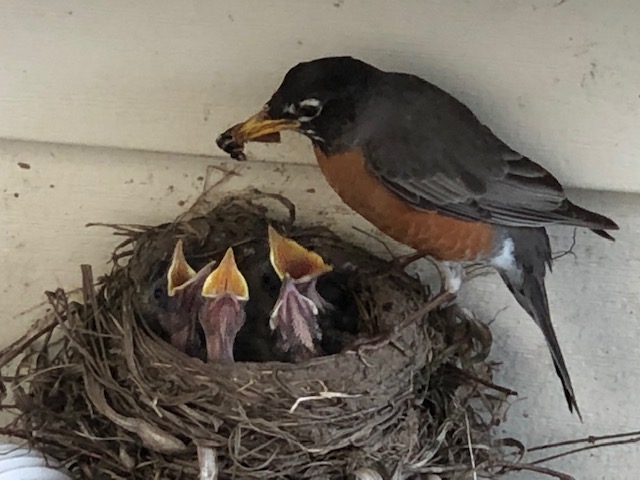
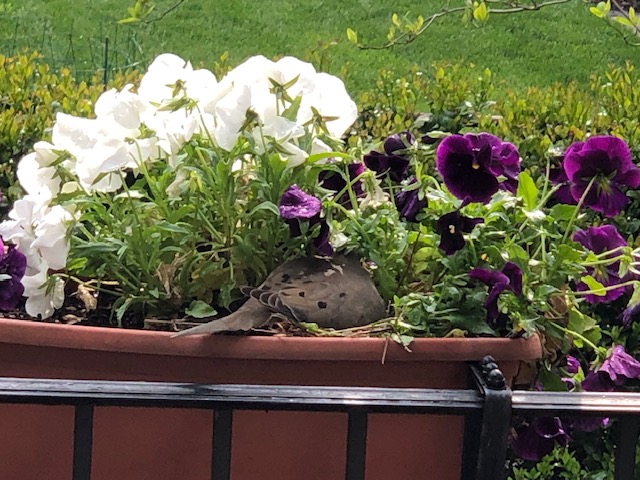
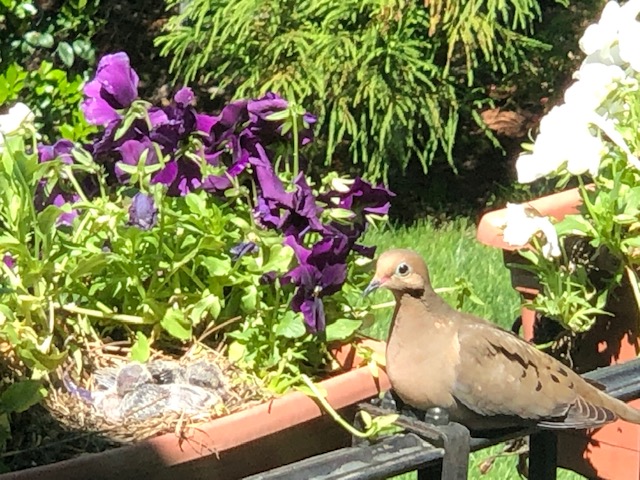

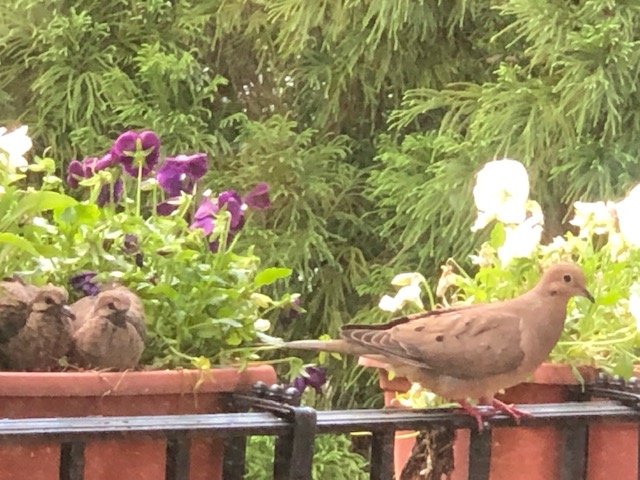
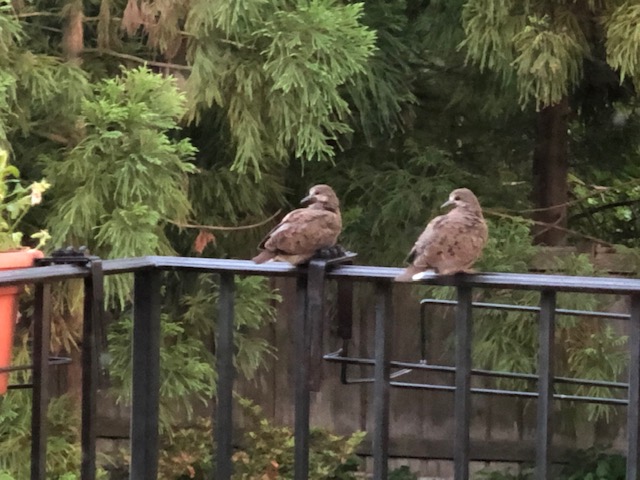
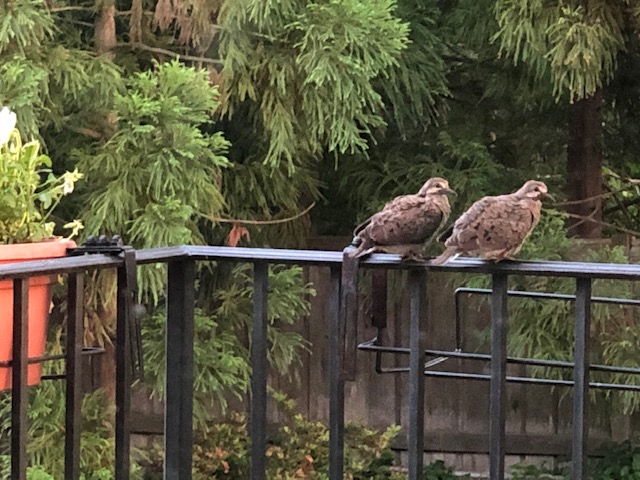
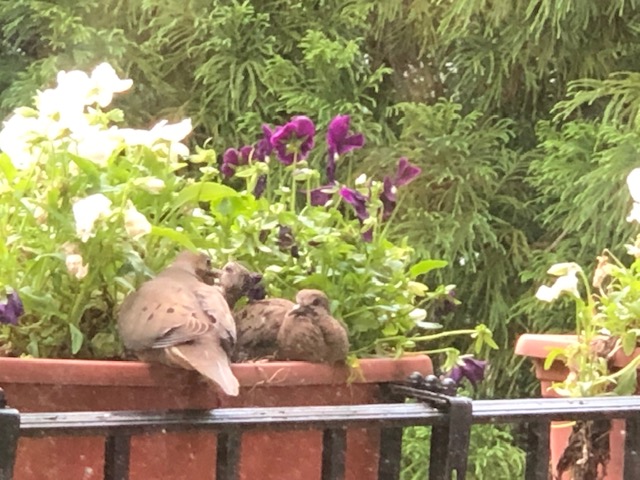
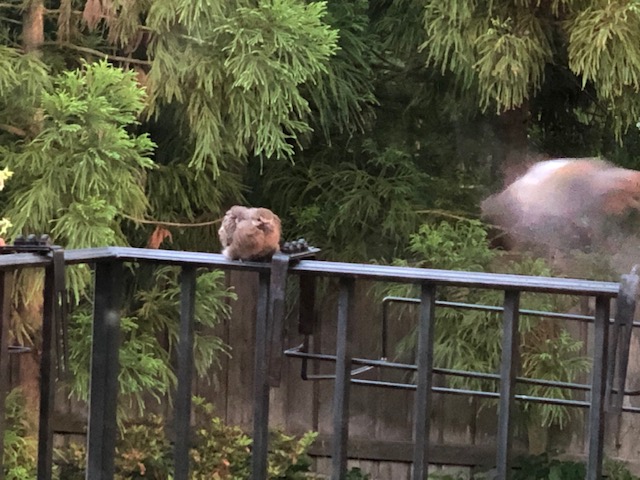
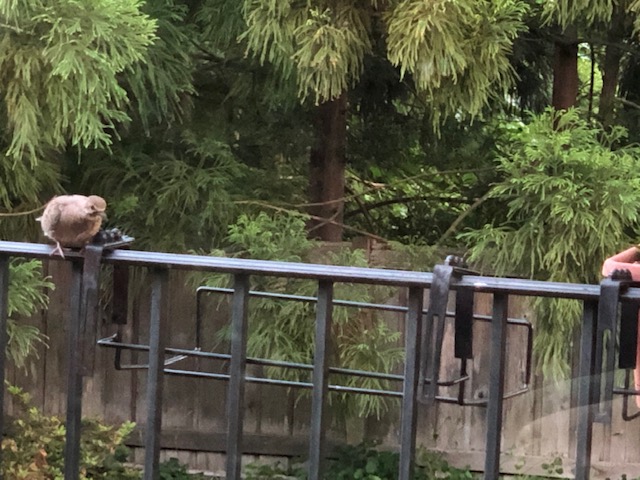
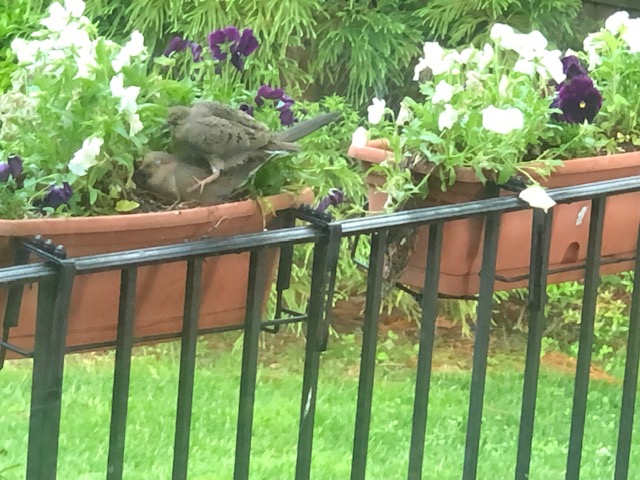
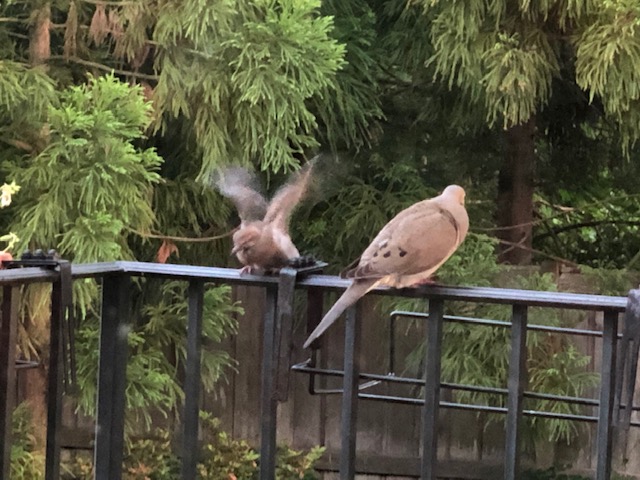
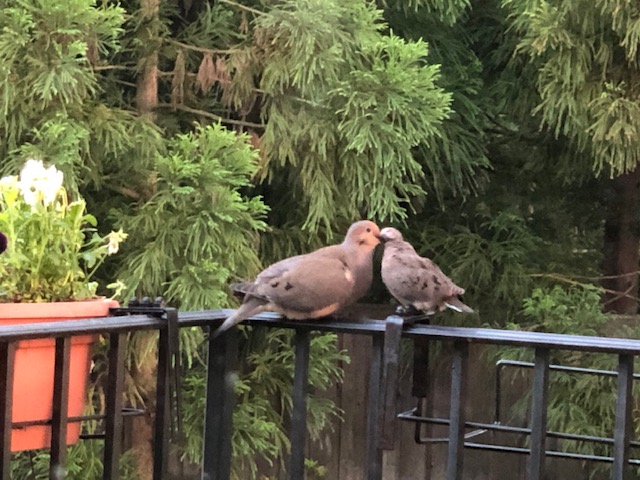
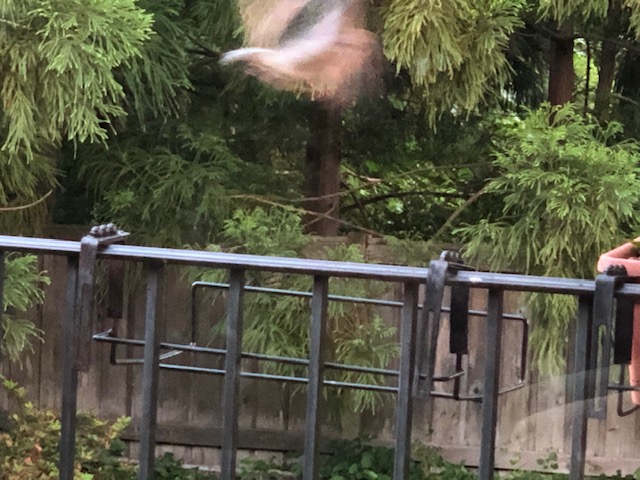
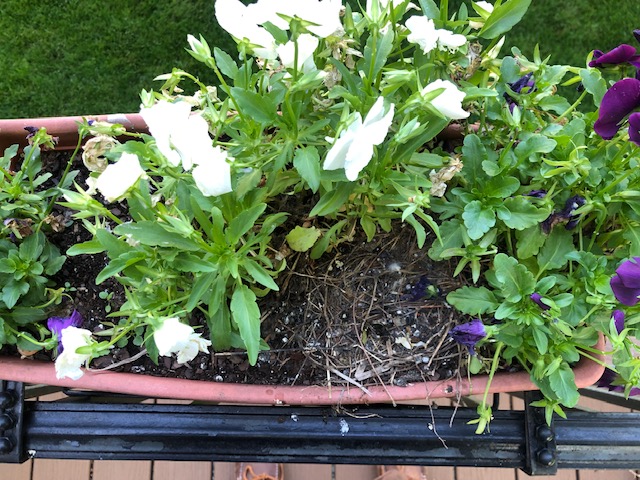
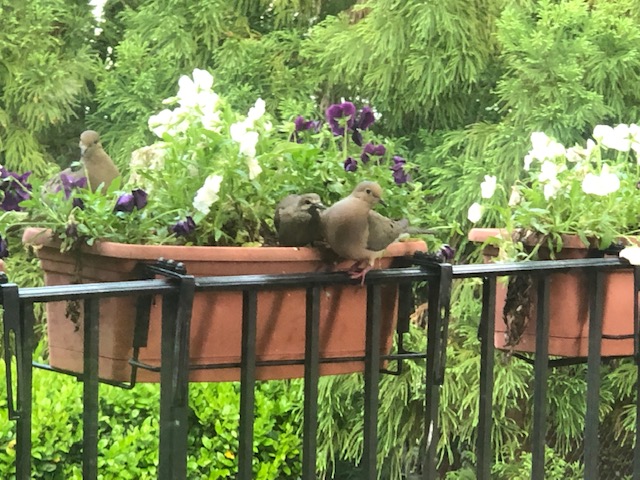
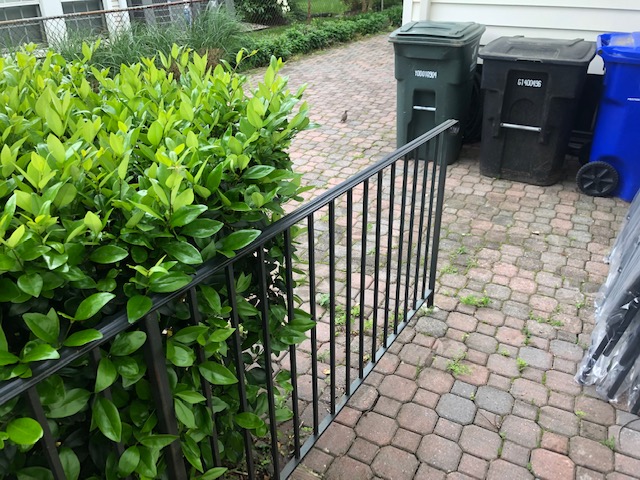
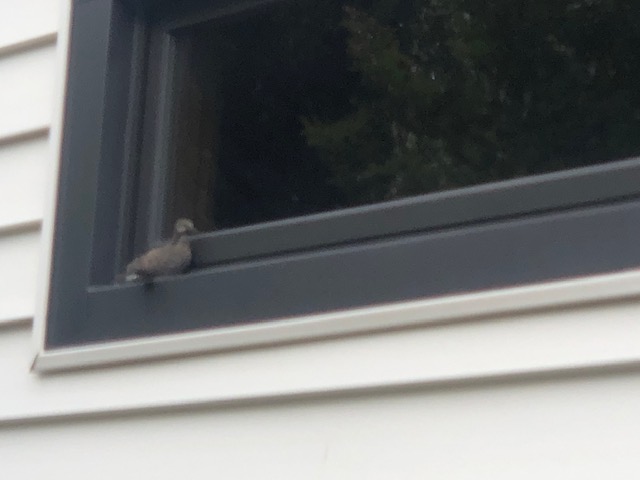
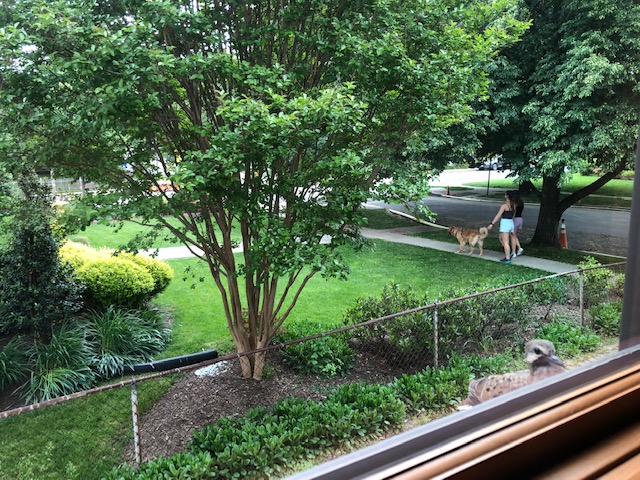
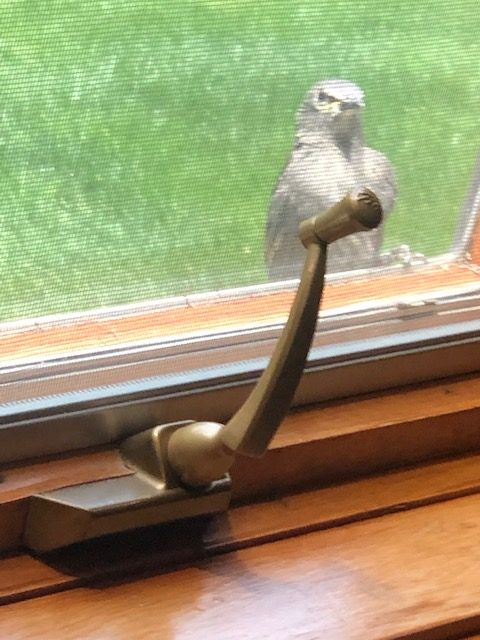
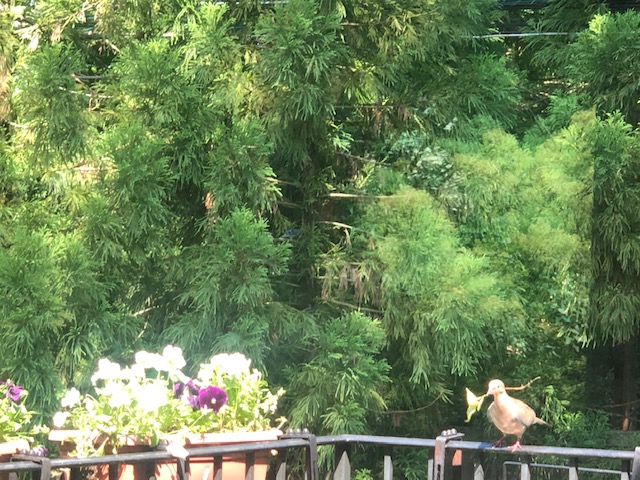
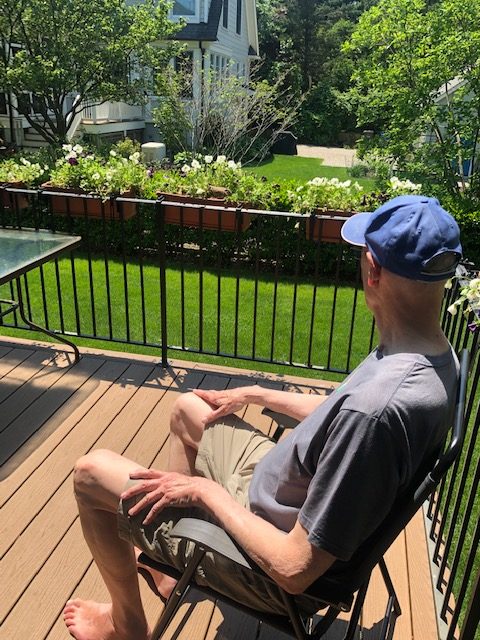
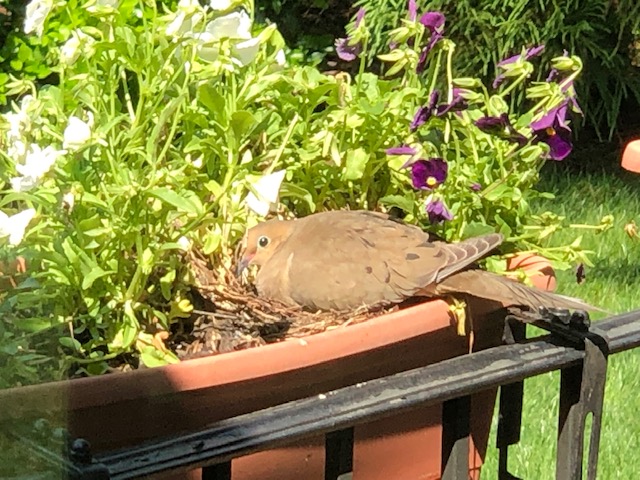
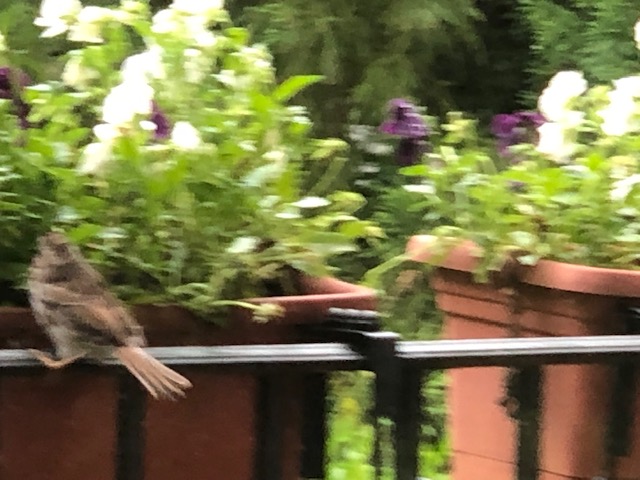
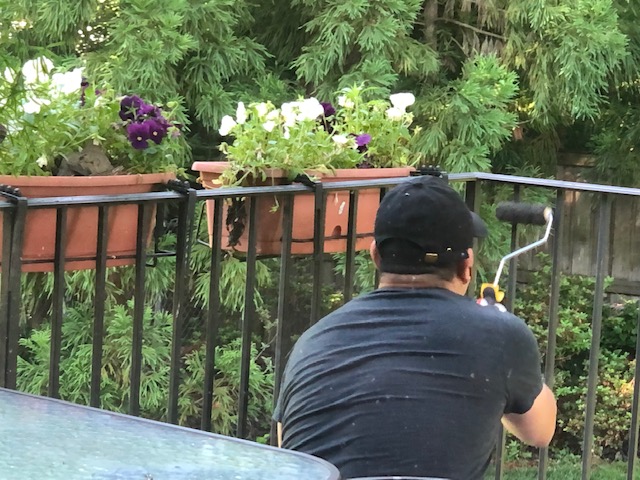
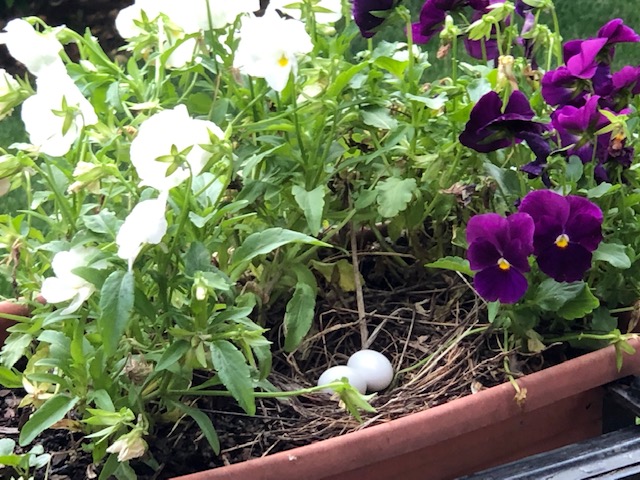
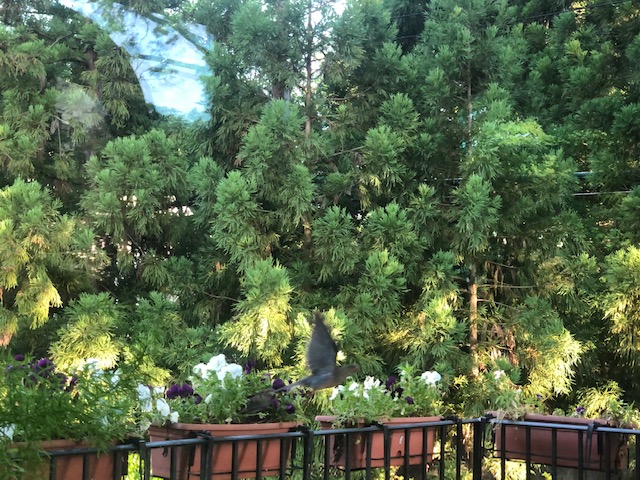
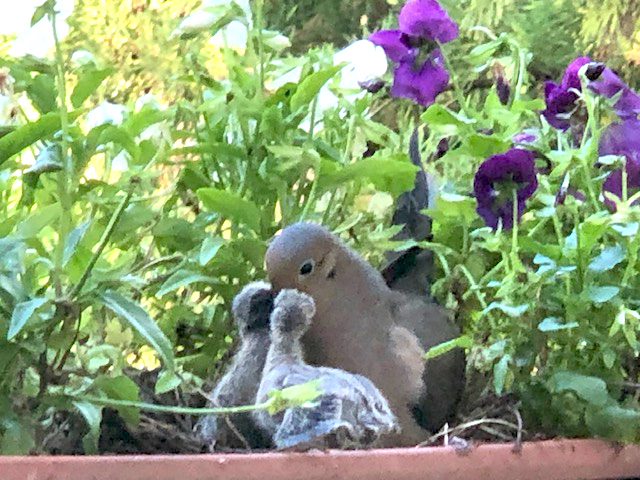
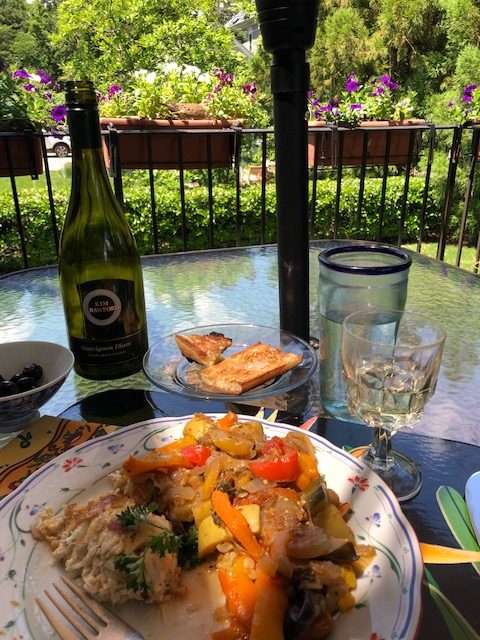
These are simply astounding photos, thanks!!